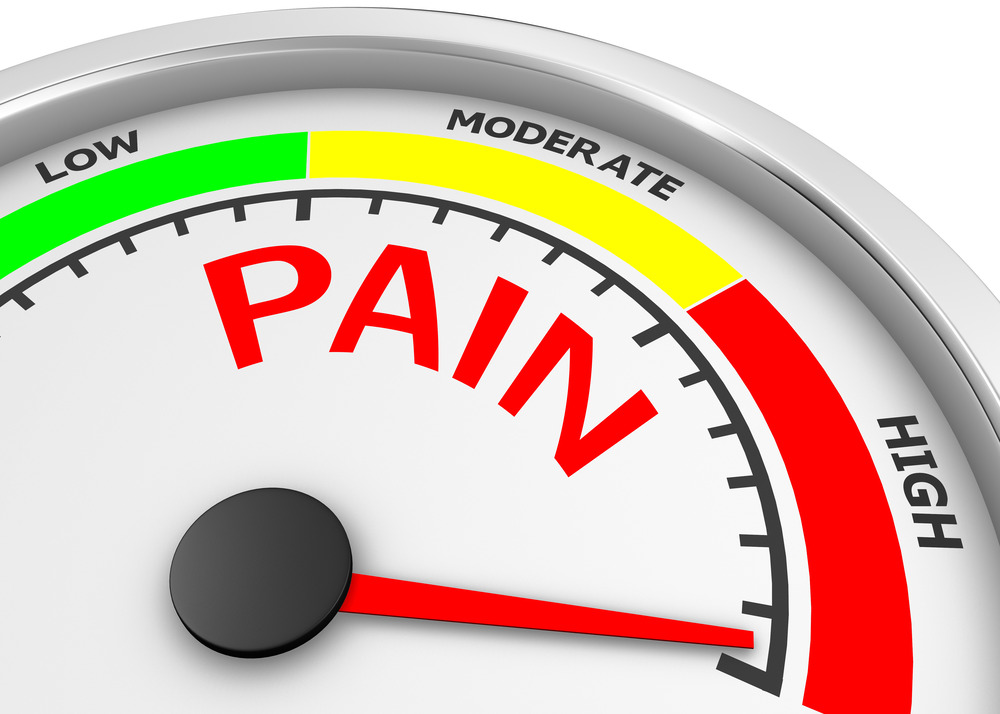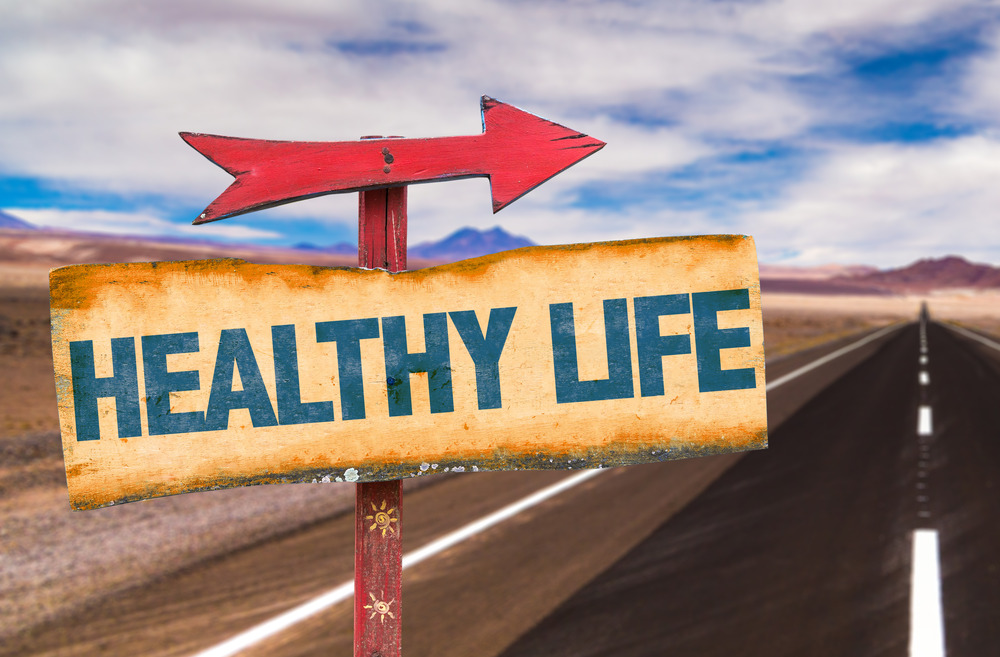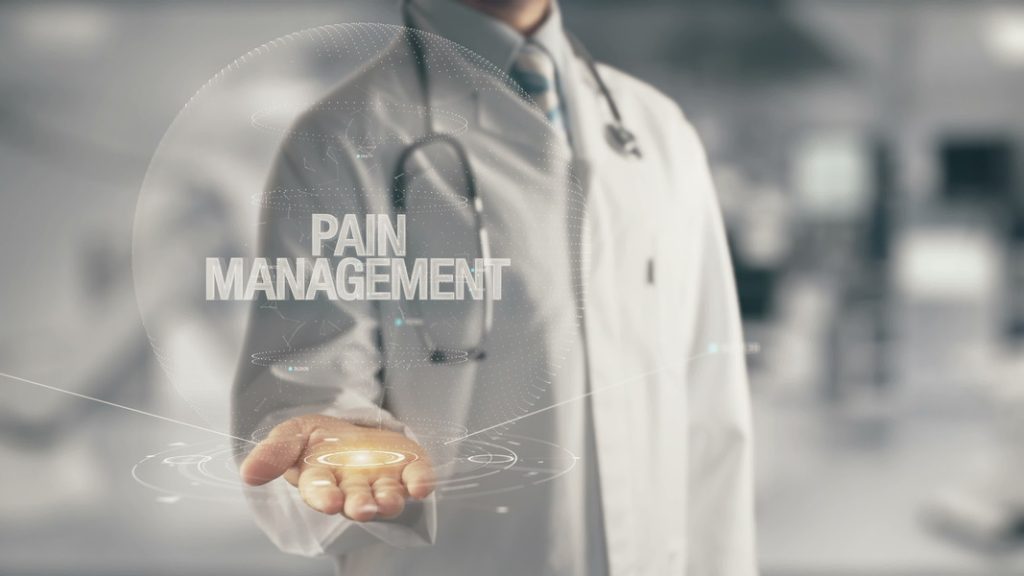
Looking for effective pain relief near you, without the risks associated with prescription medications? If you're in Utah and searching for pain relief near me, obtaining a Utah medical card may hold the key to your solution. In this post, we'll delve into how you can potentially wean off pain meds by making the most of the Utah medical card program and non-addictive treatments that are accessible nearby.
Before we dive into the advantages of non-addictive treatments, let's take a closer look at the Utah medical card program available near you. This program has been thoughtfully designed to offer individuals access to alternative treatments that may not be readily available through regular general practitioners or family doctors. These exclusive treatments can be accessed only with a valid medical card, which you can easily obtain nearby.
Acquiring a Utah medical card is a straightforward process. All you need to do is complete a convenient online application, consult with a medical provider close to you, and pay a nominal fee. Once your medical card is issued, it remains valid for one year. When the year nears its end, you have the option to renew it by consulting with a medical provider and paying the annual fee once more.
Now, addressing the pressing question: Can non-addictive treatments available near me help reduce reliance on pain meds? Specifically, we're referring to narcotic and opiate pain medications. It's worth noting that many individuals are also in search of alternatives to antidepressants and sleeping pills. Non-addictive treatments provided through the Utah medical card program can bring a ray of hope to those in need.
Non-addictive medications can potentially serve as a viable alternative to traditional medications. For individuals dependent on narcotic pain meds, it might be possible to gradually diminish their reliance on these drugs with the aid of non-addictive treatments. What makes this approach even more appealing is the possibility of combining non-addictive treatments with other alternatives.This ultimately eliminates the necessity for prescription medications.
It's crucial to understand that there are no universal solutions when it comes to medical treatment. Every person responds differently to various treatments, and this variability is why the field of medicine often involves a process of trial and error. Doctors often need to experiment with different approaches to identify the most effective treatment for each unique patient.
Know the effectiveness of the non-addictive treatments that are provided. It's equally important to understand how effective traditional treatments are. This is where KindlyMD excels, finding that perfect solution for you. People's reactions to medications vary, and what proves effective for one individual may not work for another. Therefore, a cautious and meticulous approach is of utmost importance.
For those seeking to transition away from prescription medications nearby, adopting a gradual and monitored approach is paramount. Many prescription medications should not be abruptly discontinued, as this can lead to uncomfortable side effects. Instead, a more prudent strategy involves tapering off prescription meds gradually. Then introduce non-addictive alternatives under the guidance of a nearby trusted medical provider.
With time and proper monitoring, many patients can successfully reduce or eliminate their reliance on prescription medications. Even if complete elimination is not attainable, significant reductions in medication usage can significantly enhance overall well-being.
If you are currently using prescription medications that you wish to reduce, and you qualify for a Utah medical card, it's time to talk about your treatment options. Consider paying a visit to one of our nearby clinics to consult with a KindlyMD provider. This initial step could mark the commencement of your journey toward reducing or eliminating medications you'd prefer not to take.
In conclusion, effective pain management near me can be achieved through alternative treatments offered via the Utah medical card program. We've helped thousands of patients become pain free, there is hope. Non-addictive solutions are real for those seeking an alternative to prescription medications. Don't hesitate to explore these nearby options and take the first step towards a healthier, medication-free life.
We get a lot of great questions about plant-based medicines and prescription pain medications. No doubt the KindlyMD team is always happy to answer those questions. One we get frequently is whether it is okay to use both plant-based meds and prescription pain meds at the same time. In a word, yes.

KindlyMD fully supports the idea of obtaining a Utah Medical Card for the purposes of using plant-based medicines. But that does not mean we shun traditional pain medications. Here's how we see it: we're open to any treatment that offers the pain relief our patients are looking for without endangering their physical or mental well-being.
Our approach to pain management may be a little bit different from what you have previously experienced. We are not big fans of clinicians directing patients while expecting those patients to do what they are told without any participation in the process. That is not how we do things. We want to work with you rather than dictate to you.
Truth be told, this is one of the reasons we help patients obtain their Med Cards. Getting a Med Card opens a door to entirely new possibilities rooted in plant-based medicine. But plant-based medicines are different. They are not prescribed with the same rigid requirements that come with prescription pain meds. Therefore, we work with patients to:
We firmly believe that patients should ultimately be in control of their own healthcare. With that in mind, we see ourselves as a partner in the effort to help patients feel better. We work as a partner rather than the 'one in charge'.
Getting back to the main topic of this post, it is important to note that your results with plant-based medicines will vary. Your experience will not be identical to anyone else's experience. Your experience will be yours alone.
You might find that you can completely stop using prescription pain medications once we figure out the best way for you to use plant-based alternatives. Patients experienced that sort of thing all the time. If that's what happens for you, great!
On the other hand, you might also discover that plant-based medications only help to a certain degree. You still need to take your prescription pain medications to get complete relief. That is fine too. Whatever works for you works for us.
Even if you find that you cannot completely eliminate prescription pain medications from your treatment plan, perhaps you can reduce your dosage or frequency. That is still a worthwhile goal. And once again, that's the experience for many of the patients we treat. It might ultimately be yours as well.
The thing to remember is that you are your own person. How you respond to both prescription pain meds and plant-based medicines will depend on your physical health, mental health, and even the physiological characteristics that make you unique. What makes you who you are is good. Our approach is to work with whatever you bring to the table.
If you are wondering how to get a Utah Medical Card, KindlyMD can help. If you already have your card, we can come alongside and assist you with medication management, behavioral health, and more. And yes, you can use both plant-based medicines and prescription pain meds at the same time. It is really okay!
Pain clinics mostly see patients dealing with chronic pain, but these clinics are also beneficial for those dealing with pain resulting from surgery. Fortunately, many of the principles that apply to chronic pain management can also be utilized in a post-surgical situation. Post-surgical pain can be managed until it eventually subsides on its own.
KindlyMD is able to treat post-surgical pain thanks to plant-based medicines made available through Utah's Medical Card program. As a side note, plant-based medicines are one alternative to the traditional pharmacological approach to pain management. We think it’s something well worth considering if you have an upcoming surgery that could result in acute (short-term) pain.
With all of that in mind, here are five tips for successfully managing post-surgical pain:
Whether surgical patients choose traditional prescription medications or plant-based medicines, their doctors will make recommendations. The most effective way to manage post-surgical pain is to follow those recommendations.
In the case of prescription medications, following the instructions on the medication label is a no-brainer. When plant-based medicines are chosen, the patient's medical provider should offer recommendations about dosage and delivery. They should be followed as well.
A patient's body usually needs time to heal following surgery, and medical providers usually recommend getting plenty of rest during this recovery phase. When patients don't get enough rest, post-surgical pain can actually feel worse. The good news is that the opposite is also true. Getting plenty of rest helps the body heal. As it does, pain tends to gradually subside.
It is not uncommon for surgeons to recommend either heat or cold therapy. Heat therapy, by way of heating pads and heat-generating topical medications, can reduce muscle and soft tissue pain by encouraging relaxation. Cold therapy helps to alleviate pain by reducing inflammation and numbing the general area.
One or the other is usually appropriate in the days following surgery. Patients should always ask their surgeons which therapy is the best choice. There might also be specific recommendations for implementing heat or cold therapy.
Despite needing plenty of rest, some patients can benefit from regular exercise as well. It really depends on the type of surgery a patient has undergone. One way or another though, a patient will have to get back into the swing of things as healing progresses. Exercise can help a lot.
Exercise improves circulation. It strengthens muscles, tendons, and ligaments. As a result, it can also reduce pain. The only thing about exercising in a post-surgical scenario is overdoing it. It is important to follow a doctor's instructions.
The last tip for successfully managing post-surgical pain is probably the most important of all: follow up with the doctor. Follow-up visits accomplish a lot, beginning with allowing the doctor to evaluate the patient's progress. During follow-up visits, the patient can also relay how they are feeling.
Medical providers take advantage of follow-up visits to make modifications to a patient's treatment. A doctor might want to reduce a certain medication or eliminate it altogether. There may be a need to temporarily alter the patient's lifestyle choices.
Pain is a normal part of surgical recovery. If you have ever had surgery yourself, you know the deal. If you have an upcoming surgical procedure for which you expect to have a need for prescription medications, there are alternatives. Contact us to learn more about the plant-based approach to managing surgical pain.
A conventional approach to pain management usually consists of a combination of treatments, including pain medications, surgical procedures, and physical therapy. In some cases, lifestyle modifications are recommended. But here at KindlyMD, we go above and beyond the conventional approach to offer alternatives. In addition to plant-based medicines, we also recommend behavioral interventions.
Behavioral interventions are different types of treatments designed to reduce pain by helping people modify the way they think about, feel, and experience what is going on in their bodies. Behavioral interventions do not always mitigate the need for prescription medications. But they can help a great deal.
Utilizing behavioral interventions in a pain management scenario is based on an understanding that the body and mind are intrinsically linked. How a patient feels affects how they think, and vice versa. If a pain management physician can help a patient align body and mind in a positive manner, it is possible to alter the pain experience.
This is easy enough to see in a chronic pain scenario. People suffering with chronic pain are more likely to also be clinically depressed. Unfortunately, feelings of depression can enhance the pain experience. But if patients can manage to adopt a more positive outlook, their pain may be alleviated. Patients often notice a marked improvement in their quality life when they’re able to find effective treatments for pain.
Behavioral interventions are utilized in pain management as a tool for aligning body and mind in a positive direction. One of the most well-known examples is cognitive behavioral therapy (CBT).
Although CBT is utilized for a variety of physical and mental health conditions, its usefulness in pain management is rooted in helping patients identify and challenge their negative thoughts and feelings about pain. Learning coping skills is also part of CBT.
Other examples of behavioral interventions include:
There are many other behavioral interventions utilized by pain management physicians. The four mentioned in this post are only meant to give you an introduction to the concept. Here's the takeaway: medication isn't the only option for treating chronic pain. It might not even be the best option in some cases.
One of the driving forces behind establishing KindlyMD is our medical providers’ firm belief that patients need more options. For far too long, prescription medications and surgical procedures were the only choices chronic pain patients had to work with. But years of treating chronic pain through these means have clearly demonstrated that other means need to be found.
We offer alternative treatments along with some of the conventional options. Our treatments include both plant-based medicines and behavioral interventions. If you have tried conventional treatments without success, we invite you to come see us at KindlyMD.
Behavioral interventions might seem a little odd to you. We get it. They are not something most people have experienced. But we can tell you that they are amazingly effective for many of the patients we treat. They might help you.
In the pursuit of improved healthcare and holistic well-being, the medical community is increasingly recognizing the importance of reducing opioid and harsh prescription medication usage. As a healthcare company committed to fostering health, vitality, and longevity, we are excited to explore the remarkable benefits that come with this positive shift. In this article, we'll delve into how reducing opioids and adopting alternative approaches can lead to better outcomes for individuals seeking relief from pain and discomfort.
1. Enhanced Pain Management
Pain relief is a crucial aspect of healthcare, and there's a growing realization that relying solely on opioids and harsh prescription medications might not always be the best solution. By exploring alternative methods such as physical therapy, Medical Cannabis, and mindfulness practices, individuals can experience pain relief that addresses the root causes, rather than masking the symptoms temporarily. These approaches empower patients to manage their pain in a way that aligns with their overall well-being.
2. Minimized Risk of Dependency
One of the most significant concerns surrounding opioid usage is the potential for dependency and addiction. By reducing opioids and opting for non-opioid pain management strategies, individuals can significantly lower their risk of falling into the trap of addiction. This shift not only benefits the patient but also contributes to creating a healthier society at large.
3. Improved Mental Health
Opioid medications can have a notable impact on mental health, potentially leading to mood swings, depression, and anxiety. By embracing alternative methods like cognitive-behavioral therapy and meditation, individuals can manage pain while maintaining their emotional equilibrium. A holistic approach to health considers both the physical and mental well-being of each person, promoting a higher quality of life.
4. Empowerment Through Education
Reducing opioids opens the door to educating patients about their treatment options. When individuals are aware of alternative therapies available to them, they can actively participate in their own healing journey. By collaborating with healthcare professionals, patients can co-create personalized treatment plans that align with their goals and values.
5. Personalized Care and Treatment
Every individual's body responds differently to medications and therapies. Reducing reliance on opioids allows healthcare providers to offer more personalized care. By tailoring treatments to the unique needs of each patient, healthcare professionals at KindlyMD can optimize outcomes, minimize side effects, and enhance the overall healing experience.
As advocates for comprehensive health and compassionate care, we firmly believe that reducing opioids and harsh prescription medications is a significant step towards a brighter, healthier future. By embracing alternative methods of pain management, we empower ourselves and our loved ones to take control of our well-being. Through education, collaboration, and a holistic approach to healthcare, we can pave the way for improved pain relief, mental well-being, and overall vitality.
At KindlyMD, we are dedicated to guiding you on this journey toward health and healing. Our compassionate team is here to provide the support, education, and expertise you need to make informed decisions about your well-being. Together, let's reduce opioids, nurture holistic health, and build a community that thrives on well-rounded, sustainable healing. Schedule your appointment today.
National Center for Complementary and Integrative Health. "Chronic Pain: What You Need to Know." NCCIH, 2021, https://www.nccih.nih.gov/health/chronic-pain-what-you-need-to-know.
Chou, et al. "The Effectiveness and Risks of Long-Term Opioid Therapy for Chronic Pain: A Systematic Review for a National Institutes of Health Pathways to Prevention Workshop." Annals of Internal Medicine, 2015, https://www.acpjournals.org/doi/10.7326/m14-2559

Medical science knows a lot about pain. But truth be told, there is a lot more we don't know. We do not know why people perceive pain differently, for example. No doubt we have some educated guesses. But we can't offer a concrete explanation. One possible explanation is known as the Gate Control Theory of Pain (GCTP).
The GCTP's origins go back nearly 60 years. It was first posited in 1965 as an explanation for how pain signals make it to the brain. The theory focuses on two different types of nerve fibers referred to as “gates.” Opening and closing these gates is the key to reducing pain sensations.
We still call the GCTP a theory nearly six decades later because it has never been scientifically proven. However, there is value in considering its merits. Even if the actual gates discussed by the theory don't exist, the principle behind it is worth further attention.
We tend to think of pain as a static mechanism that remains consistent across the board. If you touch your hand on a hot stove, nerves in the skin sense danger and send pain signals to the brain. Those signals are designed to get you to pull your hand away. They act as a mechanism to protect you.
That said, there are other types of pain that do not offer the same benefit. The pain caused by osteoarthritis is by no means a safety mechanism. It doesn't protect you from anything. Instead, it lets you know that the cartilage between your joints has worn away to the point that the bones are grinding on one another. It is a different kind of pain that exists for an entirely different reason.
Knowing that pain isn't static leads us to believe that there is more to pain perception than just signals traveling up the spinal column to the brain. That is exactly what GCTP posits. The theory is rooted in two different types of nerve fibers in the human body.
Larger nerve fibers, like those found in the skin, transmit sensory information that may or may not have anything to do with pain. Smaller nerve fibers, located internally, are more likely to send signals related to tissue damage, inflammation, etc. The thinking is that opening the larger gates while closing the smaller ones reduces the perception of pain.
It stands to reason that the larger nerve fibers are more responsive in some people than their smaller counterparts. These types of people would be more sensitive to tactile experiences – like massage, for example. Likewise, other people have more active smaller fibers.
So, what does all this mean from a pain management standpoint? Let us assume the theory is true. People with naturally higher activity in the larger fibers should have a higher tolerance for pain. Those with more activity in the smaller fibers would have a lower tolerance. If we could manipulate both fibers, we could influence pain perception.
It is an interesting theory that demands more research. Until such research is undertaken, we cannot say for sure how legitimate Gate Control Theory of Pain really is. However, we can say for certain that people perceive pain differently. That much is true.
Regardless of your particular pain perceptions, the professionals here at KindlyMD want to help. Our pain clinics are staffed by trained professionals who take a holistic approach to pain management. We don't want to just treat you; we want to be equal partners with you on your journey to feeling better.
At KindlyMD, we believe in holistic healthcare that encompasses not just the physical aspects but also the emotional and mental well-being of our patients. Today, we want to discuss a topic that often gets overlooked but is of paramount importance: the intersection of chronic pain and mental health. Emerging research is shedding light on the profound impact that mental health support can have on managing chronic pain effectively. Join us as we explore the connection and the benefits of a comprehensive approach to your well-being.
Chronic pain isn't just about physical discomfort; it can take a toll on your mental and emotional state. Studies have shown that individuals dealing with chronic pain often experience increased levels of stress, anxiety, and depression. This complex relationship creates a vicious cycle where the pain exacerbates mental health issues, and those issues, in turn, intensify the perception of pain.
A 2019 study published in the "Journal of Pain Research" found that chronic pain patients with comorbid anxiety or depression reported higher pain intensity and reduced quality of life compared to those without these mental health conditions. This highlights the need to address not just the physical symptoms but also the emotional well-being of chronic pain sufferers.
At KindlyMD, we understand the intricate connection between chronic pain and mental health. Our compassionate team of healthcare professionals is committed to providing comprehensive care, addressing both the physical and emotional aspects of your pain. Our personalized treatment plans include a combination of traditional medicine, alternative treatments, and mental health support to ensure you receive the holistic care you deserve.
Chronic pain is more than just physical discomfort; it's a complex experience that impacts every aspect of your life. The KindlyMD team is here to support you on your path to healing. Remember, you're not alone, and a comprehensive approach that includes mental health support can make all the difference. Let's work together towards a brighter, pain-free future. We can break the cycle of chronic pain and help you regain the quality of life you deserve. Contact us today or schedule now to embark on a journey toward healing, where your mental well-being is just as crucial as your physical health.

We do things a little bit differently at KindlyMD. For instance, we consider healthcare a journey rather than a service or business. We also believe patients should be able to take complete control of their respective journeys, should they decide to do so. Ultimately, each patient must decide how to utilize healthcare services, advice, treatments, etc.
That is one of the reasons we help patients looking to obtain their Utah Med Cards. Our position on the Med Card is simple: the plant-based medicines they provide access to are an alternative to other treatments for pain, PTSD, seizure disorders, etc.
If you have been feeling like you are not in charge of your healthcare journey, we can help you change that. Make an appointment at any one of our clinics to get started. In the meantime, here are six tips you can put to use right away:
Education is by far the best healthcare tool. And thanks to the internet age, we have more information at our fingertips than ever before. Take advantage of it. Educate yourself about those health concerns you have. Learn about the conditions that affect your daily life.
There is a caveat here: just because something is on the internet doesn't make it true. The best way to verify accuracy is to look for multiple sources (reputable sources, by the way) that agree.
Healthcare providers come in all shapes and sizes, so to speak. There are doctors, nurse practitioners, physician assistants, etc. The key to taking control of your healthcare journey is to find a provider who gets you. Look for a provider who is on the same page and is willing to work with you as an equal partner. When you find such a provider, don't just “see” him or her. Establish a relationship with that person.
Records are a big part of taking control. We advise keeping track of everything. For example, you might come to us for assistance obtaining your Utah Med Card. Keep a record of that assistance. But in addition, also start tracking your use of plant-based medicines. Write down every product you buy with your Med Card. Write down every time you use it, how much you use, and how it makes you feel.
Whether you are looking to get your Med Card or you need help with an unrelated issue, make a point of being an active communicator. Your healthcare provider can only help you if you are willing to be open and honest about everything. The better you communicate, the better that relationship with your healthcare provider will be.
We always say that patients are their own best advocates. It's something we believe in very passionately. If you want to take control of your own healthcare journey, learn how to be an advocate for yourself. Speak up for yourself. Make your desires and goals known. Insist on being heard, because you should be.
Last but not least is practicing prevention. Take control of your journey by making healthy lifestyle changes. Take advantage of preventative screenings and regular checkups. Being proactive with prevention is all about avoiding as many problems as you can by being as healthy as you can.
We can help you begin taking control over your own healthcare journey by assisting you in getting your Utah Medical Card. If you would like to know more information, do not hesitate to reach out.

Pain management physicians and their patients ideally work together to come up with treatment plans and follow through on them. The KindlyMD way is to work with our patients as partners in better healthcare. We invite them to take active roles in their healthcare journeys. Taking an active role starts with routine visits.
Regardless of where you are on your particular journey, taking an active role in your healthcare visits can help a lot. If you are not sure why, keep reading. The remainder of this post offers invaluable information.
Let us start by discussing what taking an active role in healthcare visits actually looks like. Bear in mind that a “visit” is any interaction you have with a pain management physician. It could be an annual physical, a routine maintenance visit, or any other type of interaction.
Taking an active role is characterized by several things:
Think of taking an active role in terms of establishing a relationship. For any relationship to work, both people need to be present. They need to communicate freely, being willing to be open and honest about everything. Both need to be willing to engage in questions and answers, problem-solving, coming up with new ideas, etc.
As for how all of this helps, remember that your healthcare provider relies on you as a guide. Whether it is a doctor, physician's assistant, or nurse practitioner, your provider can only offer advice based on available information. Your being an active participant in your visits gives your provider much more information to work with.
If your doctor is trying to help you better manage chronic pain, for instance, he needs to know how you feel. He needs to know your level of pain today as compared to when you saw him last month. The same is true for any condition. We aren’t limiting ourselves to pain management here.
Taking an active role in your healthcare visits helps your provider understand your expectations. Again, let us use chronic pain as an example. A nurse practitioner may wonder why you're not responding to a particular treatment. She may ask all sorts of questions designed to better understand your expectations. Why? Because maybe the biggest issue you're having is a misunderstanding of how a particular treatment helps.
Maybe your expectations don't match up with treatment realities. And if that's the case, your pain management physician would want to know what your expectations are so that she can make appropriate recommendations. Perhaps your current treatment isn't the best option based on your expectations. Maybe there is something else you can try.
If we could drive home just one point here it would be this: the healthcare journey you are on is ultimately your journey. Pain management physicians can only help you along that journey. We cannot travel it for you. That's why we want you to be an active partner in determining where it goes.
If you've never tried it before, we encourage you to take an active role in all your healthcare visits. Ask questions. Talk about your concerns. Let your provider know your expectations for treatment. By becoming an active participant rather than a passive patient, you can help direct your healthcare journey to a more positive outcome.
